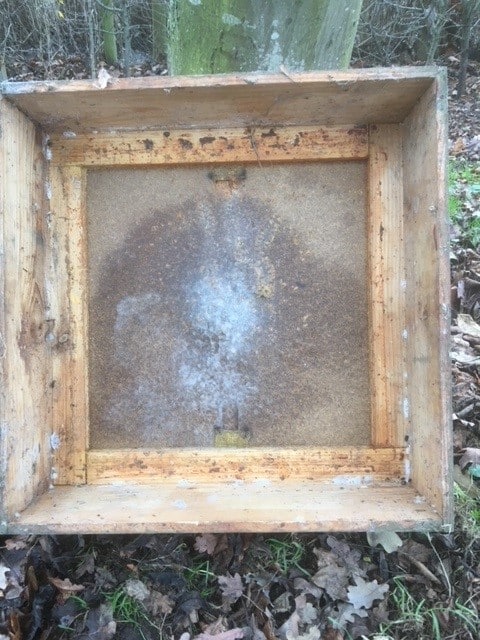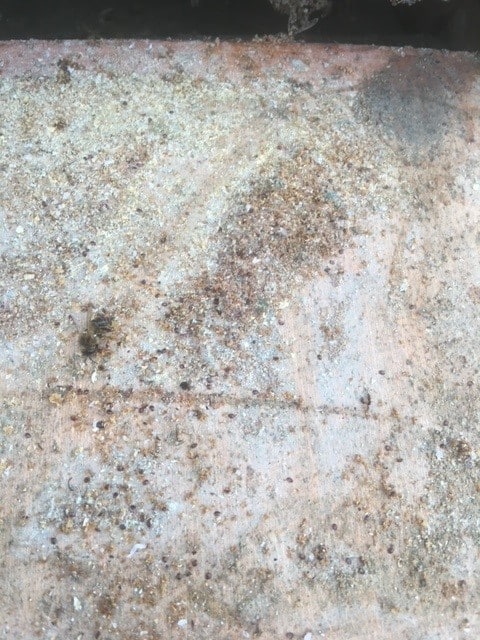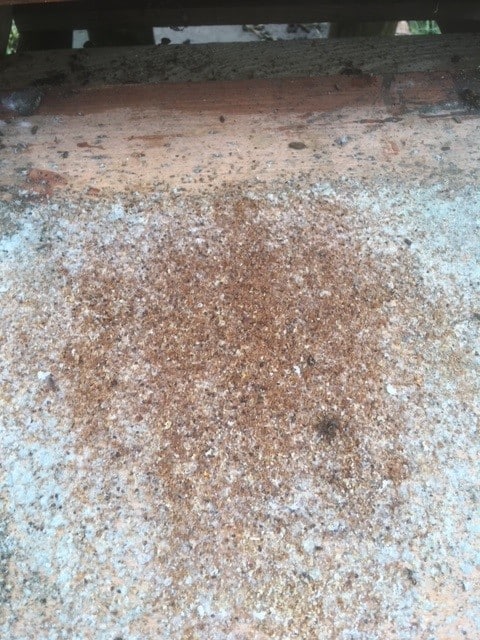The Apiary in December
It came as no surprise to us all that after the warmth of last month, December deteriorated into hard frost, snow and ice causing all the colonies to settle down into their tight winter clusters.
The good thing is, this means they will eat less of their winter stores and probably stop the Queen breeding completely, which will help with any Varroa treatment you need to administer to badly invaded hives.
Let us look at the problems the colonies will face at this time of year:
The Beekeeper:
Your job at this time is to leave them well alone until the bitterly cold weather breaks and they come out on their first cleansing flights.

No going into the brood chamber to have a look because it’s too cold for them to be flying, they can still crawl and sting. Leave the cluster alone, they have survived for many centuries without us breaking up the cluster.
Have you located them on level ground where they cannot be flooded out, tree branches fall on them or rabbits tunnel under that slab you put the stand on?
How about strong winds, are they protected strapped down or big bricks on the roof?
When did you last visit the Out Apiary?

Vagrant Pests:
Have you decent Mouse Guards on? Otherwise they will enter the hive on the opposite side to the cluster, eat all the stores and defaecate everywhere before they are ejected once the weather warms up.
The smell/stench is unbelievable so goodness knows what the poor bees think of the house/hive invasion!
They also hunt in packs. I found three in the bottom of my chickens’ metal corn dustbin (lid blown open in the storms) so the message gets out when a food source is found. My hens had great fun pursuing them around their sealed run, as they are confined to barracks due to the Bird Flue restrictions.
The Green Woodpecker cannot find its normal prey in the ground or in rotten wood when the ground is frozen, so any unprotected wooden hives are ideal for them to shred and consume the occupants.
About 2 meters of rabbit wire around the hive or shredded plastic animal feed sacks tucked under the roof will prevent this from happening.

Condensation or damp:
The rain we have had after the dry summer has got to be seen to be believed, the ground is sodden. The bees can cope with the cold but not damp inside the hive.
If you have Varroa floors this should be fine but remember to take out the Varroa slide to allow air to circulate, unless you are checking for the varroa drop.
If you have Solid floors ensure the stand allows water to run away from the mouse guard entrance and the roof is waterproof allowing water to drain away from the walls of the hive.
The winter cluster produces heat and when this meets the cold on walls, crown board or inside of the roof, this will produce moisture which can fall back onto the cluster and in the long term cause problems.
To try and solve this, remove the Varroa slide to increase bottom ventilation or take the roof off on nice warm days, when the bees are flying on their cleansing flights, and leave it sitting on top of the hive at an angle so air can circulate.
BUT remember to return and put the roof back on properly with straps or bricks back on top to secure it against the next lot of winter storms.

Varroa Treatment:
At the end of the month, about 21 days after the Queen’s stopped laying due to the cold and snow is time to treat the hives if the Varroa numbers have built up to destructive levels – nearly always in your best hives that gave you the biggest honey surplus!
The following pictures show a bad invasion which I will treat with either a trickle or “gas” method to kill the Varroa riding around on the back of my bees and feeding off their body fat.
Another picture shows the ‘crumbs’ from a healthy hive which will not need any treatment as there is no sign of any Varroa in the hive.
Remember if you treat to record what treatment you have used as we are required to under the Food Regulations and other legislation.
Starvation isolation or just big eaters.




